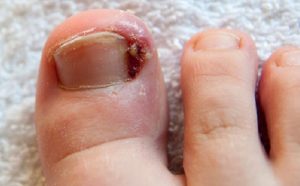The modern workforce is shifting. More people are choosing the flexibility of part-time jobs, freelancing, rideshare driving, and gig-based work. But while the gig economy offers freedom, it rarely offers benefits—especially health insurance.
If you’re one of the millions of Americans working without employer-sponsored coverage, don’t worry. This guide will help you find affordable health insurance options tailored specifically to part-time and gig economy workers in 2025.
1. Why Health Insurance Matters for Gig and Part-Time Workers
Freelancers, delivery drivers, creatives, and contract workers all face the same challenge: no guaranteed benefits. Without coverage, a medical emergency could cost thousands—or worse.
Health insurance helps you:
- Pay for doctor visits, prescriptions, and hospital stays
- Get access to preventive care (often free under ACA plans)
- Protect your income from unexpected medical expenses
2. Best Affordable Health Insurance Options for Part-Time and Gig Workers
Target Keyword Variation: Health insurance for gig workers, freelancer insurance, part-time employee insurance
Here are your top options in 2025:
a) ACA Marketplace Plans (Healthcare.gov)
Best for: Those with variable or low income
- ✅ Subsidies available based on income
- ✅ Covers pre-existing conditions
- ✅ Includes mental health, prescriptions, maternity, and more
- ❌ Can be expensive without subsidies
💡 Tip: If your income is between 100% and 400% of the federal poverty level, you may qualify for premium tax credits.
b) Medicaid
Best for: Very low-income part-time workers
- ✅ Free or nearly free
- ✅ Covers all essential health benefits
- ❌ Income limits vary by state
- ❌ Not available to all gig workers depending on income level
💡 Check Your Eligibility: Many states expanded Medicaid, so you may qualify even with part-time or freelance income.
c) Health Insurance Through a Spouse or Parent
Best for: Workers under 26 or married part-time/gig workers
- ✅ Often more affordable and comprehensive
- ❌ Not an option for everyone
💡 If you’re under 26, stay on a parent’s plan if possible. It’s typically cheaper and covers more.
d) Freelancers Union or Association Health Plans
Best for: Self-employed workers seeking group rates
- ✅ Group pricing often lowers premiums
- ✅ Tailored for freelancers and gig workers
- ❌ Not available in all states or industries
Examples:
- Freelancer’s Union
- National Association for the Self-Employed (NASE)
- Local Chamber of Commerce health plans
e) Health Sharing Plans
Best for: Healthy gig workers looking for very low premiums
- ✅ Very affordable
- ✅ Faith-based or ethical communities
- ❌ Not real insurance; no guaranteed payouts
- ❌ Pre-existing conditions often not covered
Popular options:
- Medi-Share
- Liberty HealthShare
- Sedera
f) Short-Term Health Insurance
Best for: Temporary gaps or part-time workers in transition
- ✅ Low monthly premiums
- ✅ Immediate enrollment
- ❌ Doesn’t cover pre-existing conditions or preventive care
- ❌ High deductibles
💡 Consider this if you’re between jobs or contracts and just need catastrophic coverage.
3. Comparing Plans: What to Look For
Target Keyword: Compare affordable health insurance for part-time workers
When shopping for a plan, consider these factors:
| Feature | What to Check |
|---|---|
| Monthly Premium | Can you afford this consistently? |
| Deductible | How much must you pay before coverage kicks in? |
| Out-of-Pocket Maximum | Your yearly limit on medical costs |
| Coverage Network | Are your local doctors and hospitals in-network? |
| Prescription Drug Coverage | Does it cover the meds you need? |
| Mental Health Services | Often overlooked but very important |
4. Tools to Help You Compare and Apply
You don’t have to go it alone. These platforms help you compare gig-friendly health plans:
- ✅ Healthcare.gov
- ✅ Stride Health – built specifically for gig workers
- ✅ Policygenius
- ✅ eHealthInsurance
- ✅ Catch.co – automate health, taxes, and savings for freelancers
💡 Pro Tip: Some gig platforms (like Uber, DoorDash, and Instacart) partner with Stride to offer discounted plans.
5. Real-World Example: What Coverage Looks Like for a Gig Worker
Meet Alex – A 29-year-old freelance designer who earns $35,000 a year
- Enrolled in a Silver ACA plan via Healthcare.gov
- Receives a $250 monthly subsidy
- Pays just $110/month for comprehensive coverage
- Annual deductible: $1,000
- Preventive care + mental health included
👉 Alex’s out-of-pocket risk is limited, and he has peace of mind while freelancing full time.
6. Frequently Asked Questions (FAQs)
Q: Do gig platforms offer insurance?
A: Some offer discounted access (like Uber + Stride) but not direct insurance. You still need to apply independently.
Q: What if my income changes every month?
A: You can update your estimated annual income anytime on the ACA Marketplace to adjust subsidies.
Q: Are health sharing ministries safe?
A: They’re not regulated like insurance, and there’s no legal requirement to cover your expenses. Use with caution.
Q: Can I get dental and vision, too?
A: Yes. Most ACA and private plans offer add-ons or bundled options for dental and vision.
7. Summary: What’s the Best Option for You?
| Your Situation | Best Option |
|---|---|
| Low income | Medicaid or ACA with subsidy |
| Healthy & need basic protection | Short-term or health sharing |
| Need long-term coverage | ACA Marketplace plan |
| Married or under 26 | Join spouse’s or parent’s plan |
| Want group plan | Join Freelancer’s Union or association |
Conclusion
The gig economy doesn’t have to leave you uninsured. Whether you’re delivering food, editing videos, or driving part-time, affordable health insurance for gig and part-time workers is absolutely possible.
👉 Next Step: Visit Healthcare.gov or Stride Health to compare plans and see if you qualify for subsidies today.
Don’t wait until you need it—get covered, stay protected, and keep chasing your freedom.






